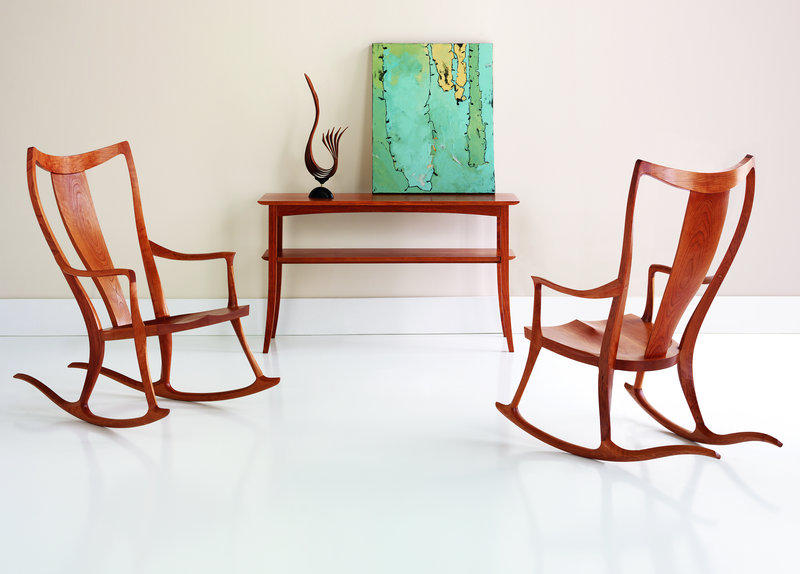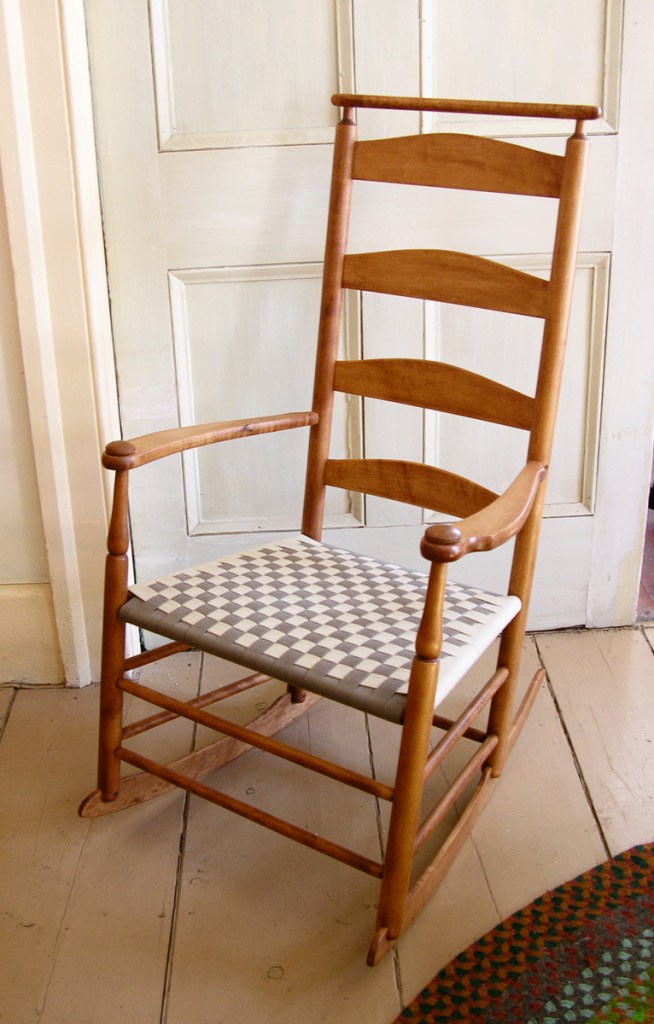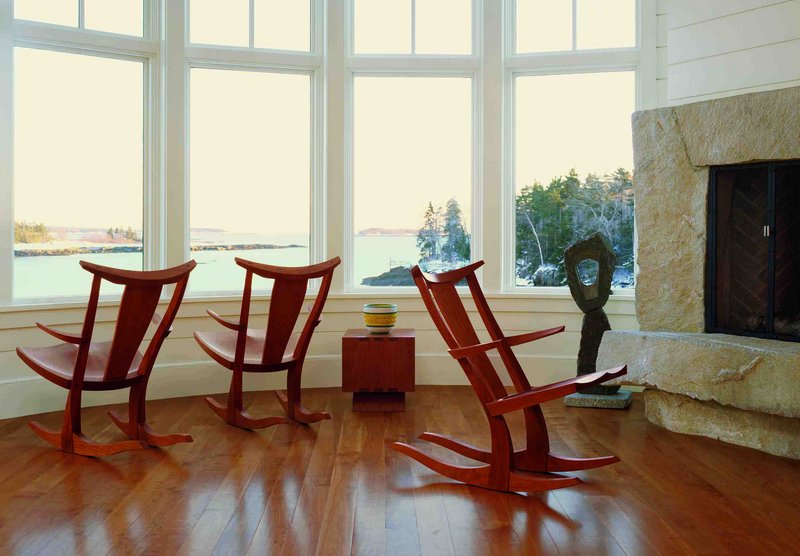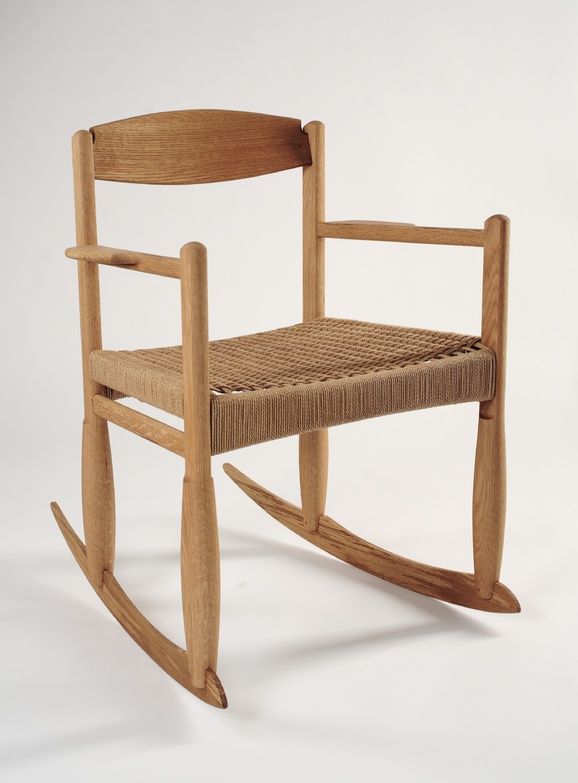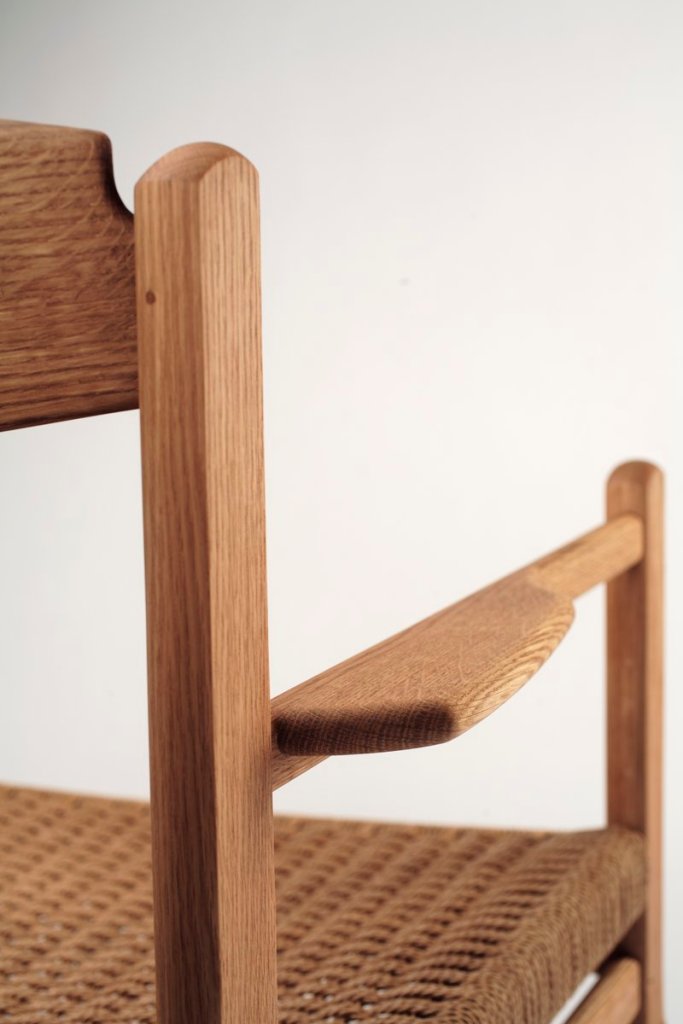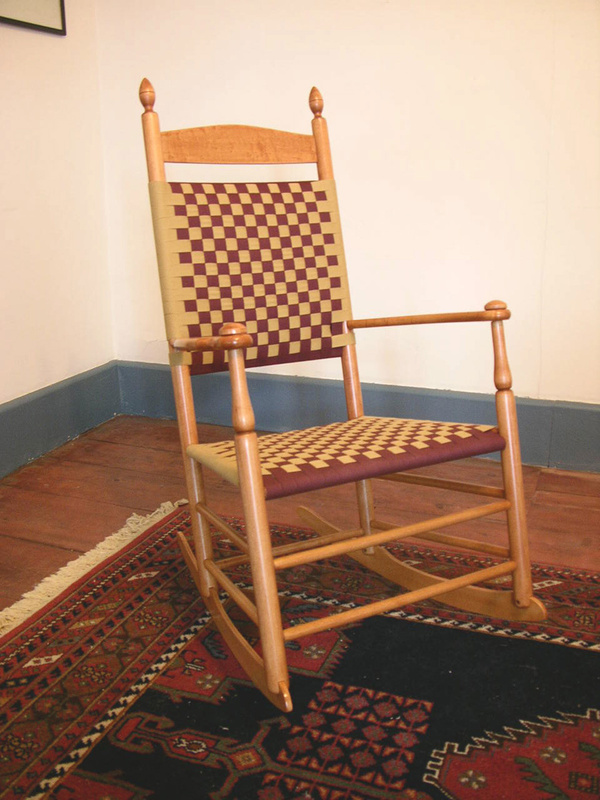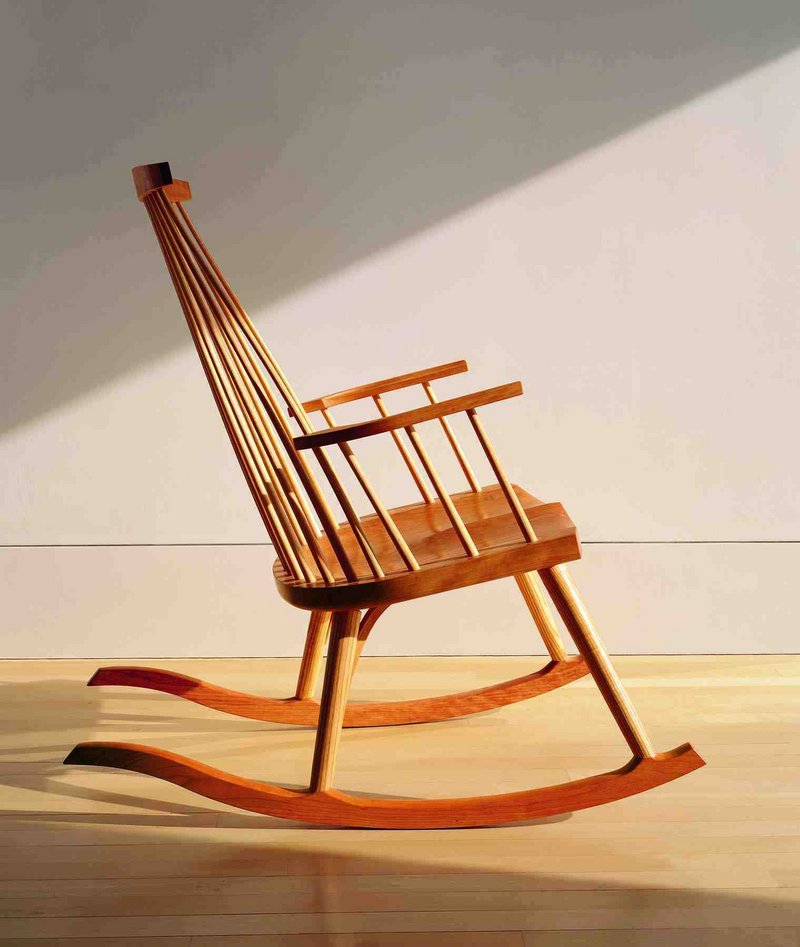Who wouldn’t want a chair that rocks?
The rocking motion, after all, is calming to most people, and it’s fun for kids.
Plus, the sight of a rocking chair conjures up images and memories of grandmothers knitting away, of mothers with new babies, and of gatherings on the front porch.
So if you think of the emotional power rockers can have, these chairs really do rock most people, both figuratively and literally. That’s why, Maine craftsman say, while lots of furniture forms come and go, rockers seem to endure.
“That slow repetitive movement is very comforting, therapeutic,” said Thomas Moser, the founder of Auburn-based furniture maker Thos. Moser. “The challenge in making them is trying not to make the curve too shallow or too sharp. You don’t want it want to be too hard to rock, but you don’t want people tipping over. A rocking chair should give people a sense of comfort, not fear.”
Furniture makers around Maine continue to meet and exceed the challenge of making rockers that are functional, pleasing to look at and well-built. So with 2012 just a week or so old, maybe this is the time to think about rocking into a new year, with a new rocking chair.
To help you get an idea of what Maine furniture makers are doing with rocking chairs these days, we asked three — Moser, Peter Turner of South Portland and Ross Timberlake of Bethel — to talk about their rockers and the thoughts behind them.
EVERYTHING OLD IS NEW
Furniture maker Peter Turner thinks there are no new ideas, that everyone takes little bits and pieces of other ideas to create new things. He did that when he created his striking Arrow rocking chair. It’s got a low back, and a very simple, sleek design.
“Some elements are Shaker, some are Danish, and some are mine,” said Turner, who makes a lot of custom furniture in his shop. “With rocking chairs, it comes down to seeing others who build rocking chairs and looking at what they’ve done, what works.”
Turner has made the Arrow chairs of oak or ash, with a Danish paper cord seat. The design began with a sketch of a candlepin leg he hoped to use for a headboard for a bed. But before he could make the headboard, he decided to make the Arrow rocker.
He’s only made a few, as he does custom work on order. The first one was made to show in a gallery, and he’s got one on view right now at Flat Iron Gallery in Portland. So far, the Arrow rockers have sold for about $3,800 apiece.
Turner has been heavily influenced by Shaker rockers, he said, and so the chair has Shaker elements, including the way the rocker pieces and chair are joined together. Like Moser, he admits it’s a challenge to a woodworker to make the rocker curve just right, so it doesn’t rock too fast or too slow.
When designing any furniture, Turner says he tries to make things he loves and find buyers that love the same thing. And many people have a love for rockers already.
“When someone sits in a rocking chair, they assume the position, and that position usually includes a smile,” said Turner. “Rocking chairs aren’t going away. They are one of those furniture items that people have an emotional attachment to.”
To see more of Turner’s work, go to his website at Petersturner.com.
DON’T MESS WITH PERFECTION
Ross Timberlake started his Bethel mail-order furniture company, S. Timberlake, 38 years ago. He makes some 30 or more rocking chairs, and all are based on traditional Shaker designs. He says that in his long career, he’s found that when it comes to rockers, the Shaker design works best.
He’s tried to modify some of those rockers over the years, often at his own peril.
“I tried to raise the seat by 2 inches once, and I almost killed myself. When they made it they knew what they were doing,” said Timberlake. “The (Shaker-style) rockers were designed to be more sitting chairs. You could rock if you wanted to, but you weren’t going to go full tilt as soon as you sat down.”
Timberlake’s Shaker reproduction rockers range in price from about $315 to $655, in a variety of woods and finishes. Some have padded backs, some have traditional “shawl bars” on the back, for hanging a shawl or sweater or blanket. But just about all of them have the traditional high-back design.
Timberlake says the height of the chair’s seat has a lot to do with the chair’s center of gravity and how well it rocks. So he would not, for instance, raise the seat of a chair for a tall person, because that would throw off the chair’s center of gravity.
Instead, his “extra large” rocker for tall people has a deeper seat, just about an inch deeper from front to back. That allows a taller person to sit more comfortably, but doesn’t affect the rocker’s ability to rock, Timberlake said.
“There is something very relaxing about the rocking chair, and it’s good for people who fidget,” said Timberlake. “I hate to admit this, but I have recliner. I never sit in it because it doesn’t move. I need a chair I can move in.”
To see Timberlake’s rockers, go to his website at Stimberlake.com.
HISTORY AND AESTHETICS
Thos. Moser furniture is sold all over the world, and the company’s designs have received critical acclaim. One of the company’s signature chairs is the New Gloucester rocker, which Moser designed some 35 years ago for a group of international investors who met once a year in New York City to talk about their investments.
“They were very wealthy men, and I thought, ‘What I could I make for men who have everything?’ So I thought about rockers,” said Thomas Moser, the company’s founder.
Moser said the inspiration for the rocker came from history, with pieces of the chair being inspired by Windsor and Shaker chairs.
In studying the history of rockers, Moser said he found that one of the earliest American rockers seems to be the Salem Rocker, in the 18th century, which also had a Windsor-inspired design. Then came the Boston Rocker, with a few more curves to it. Rockers are traditionally low to the ground, Moser said, because you have to be able to plant your feet on the ground to get out of them.
Over the years, he’s experimented with different curves of the rocking piece, trying to get just the right motion. The only good way he’s found to do that is to make a chair and then try it.
“It’s always trial and error, that’s the only way I can do it,” Moser said.
Moser’s New Gloucester rocker sells for about $1,825, while his more fluid-looking Pasadena sells for about $3,200 and his Eastern-inspired Edo sells for $2,825.
To see more of Moser’s rockers and other furniture, see the company website at thosmoser.com.
<iframe width=”420″ height=”315″ src=”https://www.youtube.com/embed/jdqc82kA664″ frameborder=”0″ allowfullscreen></iframe>
Staff Writer Ray Routhier can be contacted at 791-6454 or at:
rrouthier@pressherald.com
Send questions/comments to the editors.


